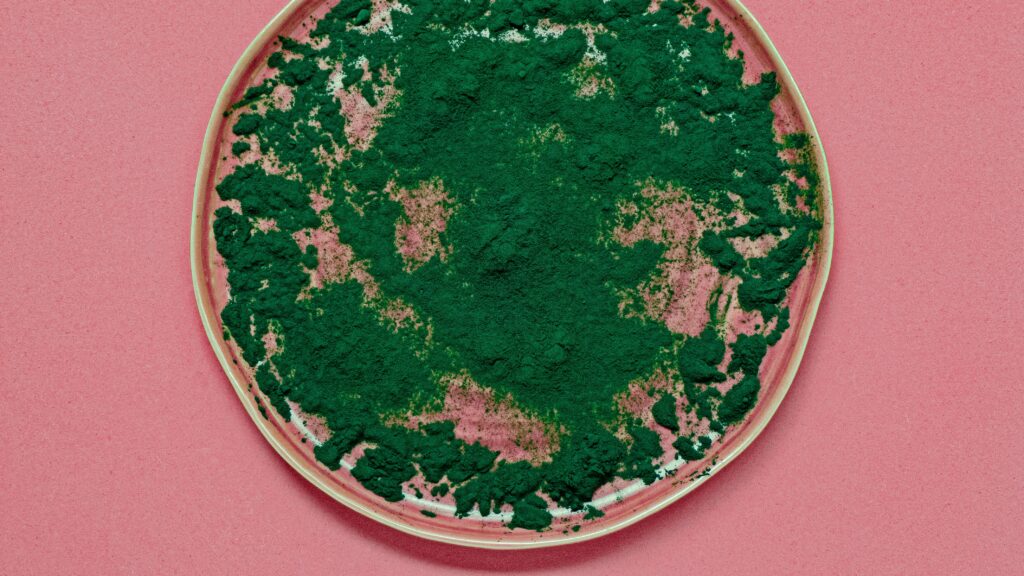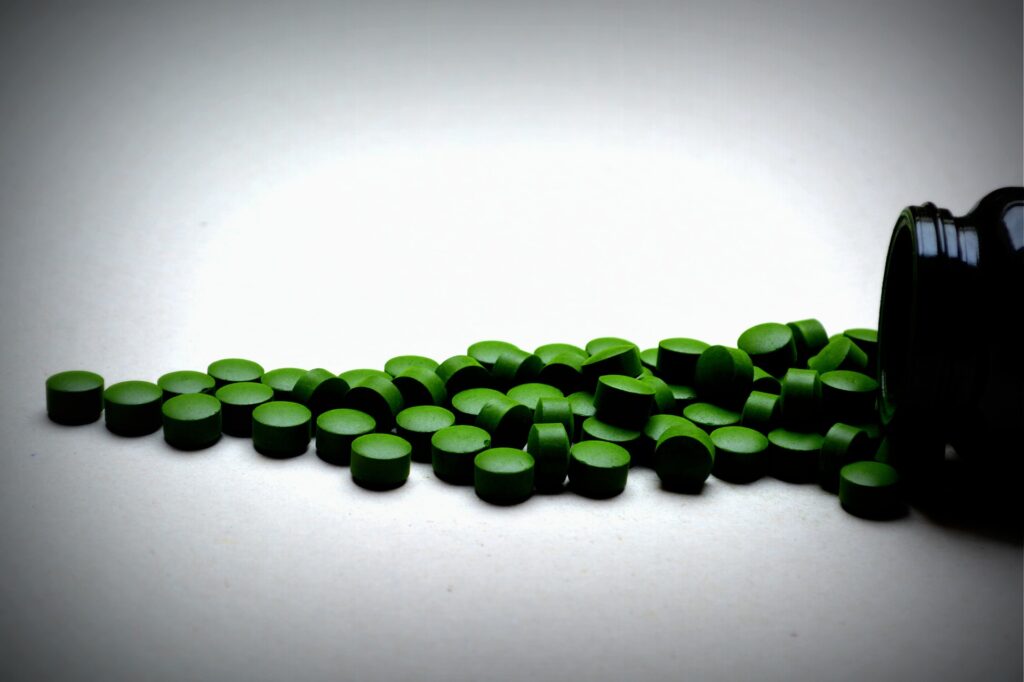Right now, you are probably asking yourself, is the title of this blog written in English, or is that some kind of Latin, Greek, or French? Well, it is English, but like many names of animals, plants, or bacteria, chlorella is not a common house hold conversation piece. In fact, the word chlorella comes from two Greek words, “chloros” and “ella” meaning green and small. For those who read the last blog, we discussed spirulina algae so that word should be familiar to those of you. Chlorella is a fresh water grown algae, which grows very rapidly in mineral water; it is stated to nearly quadruple in quantity almost every day. Most of the chlorella available to purchase is grown in Japan or Taiwan, and can be found as tablets, powder, or liquid extract.

Chlorella algae is nutrient rich, full of vitamins, minerals, protein (which is full spectrum amino acid), carotenoids, chlorophyll, phytonutrients, and anti-oxidants. Chlorophyll is reported to help the body utilize oxygen, promoting optimal blood pressure, tissue repair, and more. However, chlorella’s cell wall is indigestible, humans do not have the enzymes necessary to break it down, therefore it has to be properly prepared for human consumption; typically by milling or by rapidly changing pressure of a storage container to break the cell wall. Chlorella gained popularity shortly after WWII, when there was a growing concern about feeding the worlds population; due to its high nutrient make up and its ability to grow quickly. Chlorella has since been researched for its ability to boost your immune system, improved digestion, increased energy, support red blood cell production, balancing you body’s pH, help with balancing blood sugar, freshen breath, anti-inflammatory, hypertension, anemia, diabetes, accelerated wound healing, and more. One of the most common studies quoted about chlorella is a Russian study. This study was performed on 350 people for three years, which showed a combination of chlorella and cilantro was the best combination of more than 20 different compounds tested at eliminating metal toxins. Another common area studied, is chlorella’s ability to help cope with radiation exposure; it seems that chlorella may help the body handle radiation exposure but more research needs to be done, see the references below.
Chlorella’s nutritional make up at a glance
| Protein, Vitamin A, Vitamin C, Vitamin E, Thiamin, Riboflavin, Niacin, B6, Folate, B12, Pantothenic acid, Calcium, Iron, Magnesium, Phosphorus, Zinc, Potassium, Manganese, Copper |
In past blogs we discussed many of the ways we live in a toxic environment. But here is a short list: pesticides, radiation exposure, chemical by-products from manufacturing in our water and air, personal care products and medicines ending up in our water table, and heavy metal toxicity in seafood (like mercury). It can be said that we are under attack daily from toxins in our environment. Our body is thankfully equipped to handle some toxins and remove them through bowel, urine, and sweat. Toxins are often stored in fat cells, so being low body fat is also helpful. Often people are not having regular bowel movements, so this keeps harmful things inside longer, allowing them to do more damage. Research shows that toxins are to blame for many ill health effects like cancer, auto-immune dysfunction, autism, Alzheimer, Parkinson’s, depression, fatigue, digestive issues, aching joints, and more. Chlorella’s cell wall is what researchers think binds to these toxins and helps remove them; particularly mercury, lead, and cadmium.

As usual please consult with a qualified health care professional prior to taking chlorella; typically a naturopath or similar holistic physician. Daily dosage for chlorella has not been studied enough at this time, but is recommended at about 3-4 grams per day. Some side effects may occur, but many of these side effects are often more correlated to the processes involved in removing toxins from the body like nausea, diarrhea, stomach cramping, and gas. Chlorella may interact with some medication so consult with you health care provider prior to taking chlorella. Bottom line is that chlorella can be a helpful addition for those looking to help their body handle toxins and add some well rounded nutrients.
References:
Post-exposure radioprotection by Chlorella vulgaris (E-25) in mice. Singh SP, Tiku AB, Kesavan PC.
The radioprotective effects of aqueous extract from chlorococcal freshwater algae (Chlorella kessleri) in mice and rats. Rotakvska D, Vacek A, Bartonickova A.
Evaluation of radioprotective action of a mutant (E-25) form of Chlorella vulgaris in mice. Sarma L, Tiku AB, Kesavan PC, Ogaki M.
